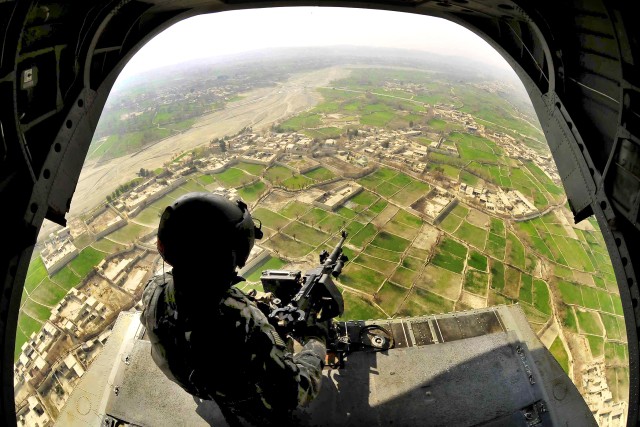
CORONADO, Calif. (March 4, 2010) -- The nation's top military officer today said the focus of American troops and their allies in southern Afghanistan would shift to Kandahar following an ongoing offensive in the former Taliban stronghold of Marja.
The comment by Navy Adm. Mike Mullen, chairman of the Joint Chiefs of Staff, marks the first time the senior-most military leader confirmed what many believed would be the next phase in a series of operations that have been characterized thus far as an early test of the new U.S. strategy in Afghanistan.
"I think General McChrystal's been pretty clear that the focus will turn to Kandahar," he told reporters at the Naval Air Station North Island here, referring to Gen. Stanley A. McChrystal, the top U.S. commander in Afghanistan. Mullen added: "His main effort is really in the south, and Kandahar will be next."
The chairman noted that operations are ongoing in central Helmand Province's Marja section, where military officials this week said the mission had shifted from clearing out the enemy to holding the gains the operation has brought about.
"We're not through Marja," Mullen said. "It's been a very tough operation, (and) will continue to be."
For months before the operation in Marja, U.S. and NATO military officials noted the strategic importance of the southern Afghanistan region and the goal to clear the area of Taliban fighters. The rationale for such a declaration of intent before the Marja offensive was to allow low-level Taliban fighters the chance to flee, and to warn civilians of the impending attack, officials said.
But what at first appeared to be a rare glimpse at the military's playbook may actually signal an intention on the part of defense officials to disclose operations in southern Afghanistan before they come to fruition. Gen. David Petraeus, the commander of U.S. Central Command, called Marja the "initial salvo" in a campaign that could last 12 to 18 months.
Marine Corps Lt. Gen. John M. Paxton Jr., director of operations for the Joint Staff, told lawmakers on Capitol Hill last month of the military's intent to focus on Kandahar following the first phase of operations.
Asked by senators why the campaign began in Helmand instead of Kandahar, the birthplace of the Taliban, Paxton replied that McChrystal concluded in his assessment in September that Helmand was at the heart of the coalition's four-point mission to protect the Afghan people, enable Afghan security forces, neutralize the insurgency and allow for governance.
"General McChrystal's plan was for Kandahar to be a place we would go, but central Helmand is where the insurgency had the most-safe haven," Paxton said during the Feb. 22 hearing before Senate Armed Services Committee. "I think you'll see Kandahar will closely follow, but central Helmand had to come first."
As the military operations of the roughly 15,000 NATO and Afghan forces that have been engaged in Operation Moshtarak since Feb. 13 begin to wind down, the focus in Marja has shifted from what the military calls the 'clear' phase to the 'hold' phase.
Marja has been characterized as representing the first test of President Barack Obama's strategy to add 30,000 more troops in the fight against Afghanistan-based insurgents. As the initial phase of operations comes to a close, Deputy Defense Secretart William Lynn said this week that Marja has emerged as an area where hope is returning.
"Because of our new strategy, and President Obama's deployment of additional troops," Lynn told the American Legion in Washington, "Marja is one of many cities in Afghanistan that has begun to have hope."

Social Sharing